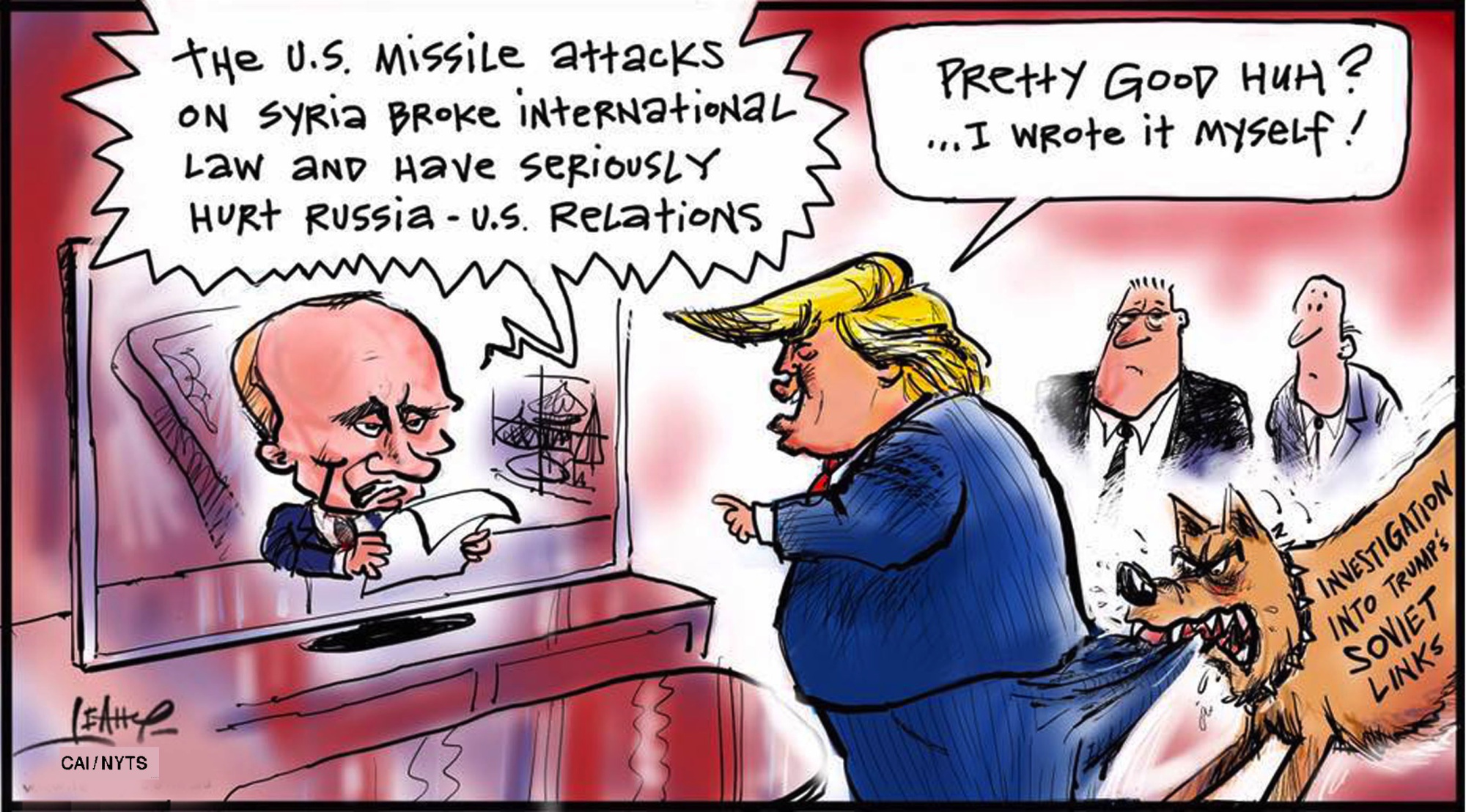U.S. President Donald Trump and Russian President Vladimir Putin are the leaders of countries with 14,000 nuclear weapons, including 1,800 ready for instant launch on presidential authorization. Both pursue "America/Russia first" policies to make their country great again. But only one of the two countries has a string of military bases and hundreds of thousands of troops deployed in distant hot spots circling the globe. Over the past two decades, only one has threatened, bombed, attacked, invaded and forcibly removed leaders of many other countries.
Of the two leaders, only one is widely believed, including by his own citizens, to be paranoid, volatile, erratic, inconsistent, bombastic, vulgar, shallow and a morally compromised individual. He can be moved by TV images of suffering children to bomb a country but bans their people — the same suffering children — from coming to his own country as desperate refugees. Only one —but not the same one — pursues a coherent foreign policy informed by long-term strategic purpose.
This raises a key puzzle. Both countries are engaged in the Syrian conflict, which is a tangled mess of internal, regional and global conflict parties and patrons. They offer contrasting narratives of heinous incidents. Chemical weapons were used in an attack on Khan Sheikhun on April 4. Trump blames the Syrian Air Force. Putin dismisses this as a self-serving fabrication and claims that chemical weapons stored at a rebel-held base were released after a Syrian strike.



